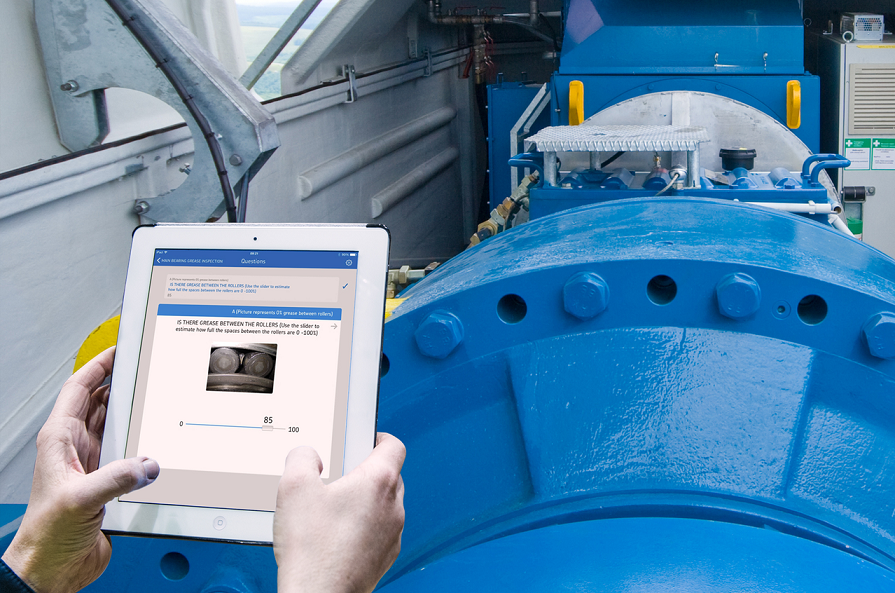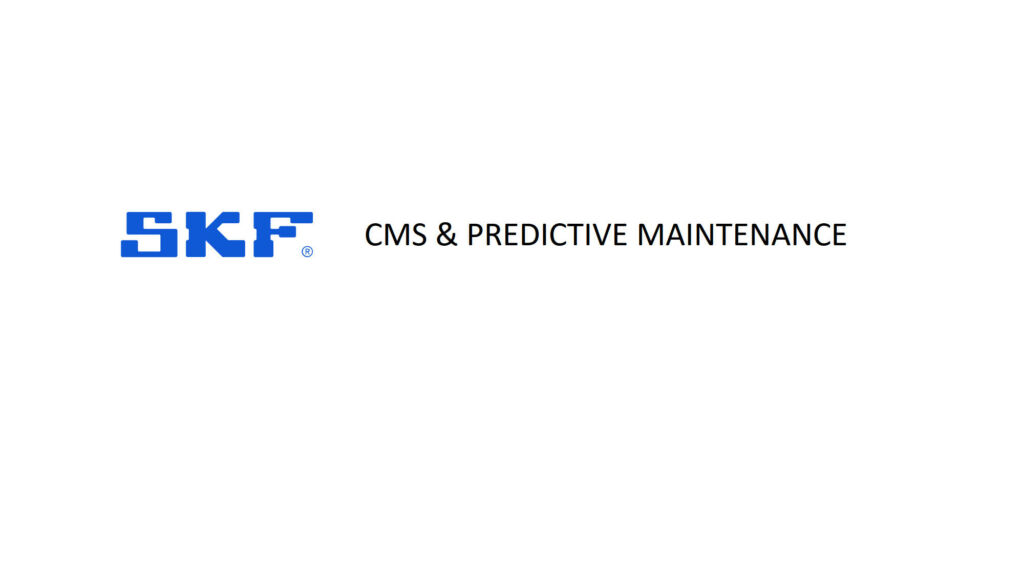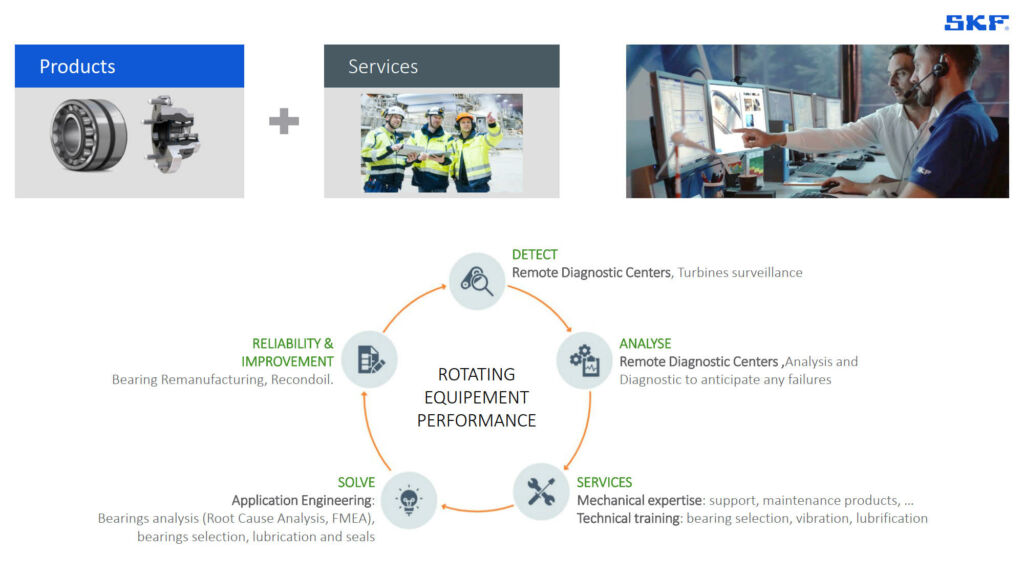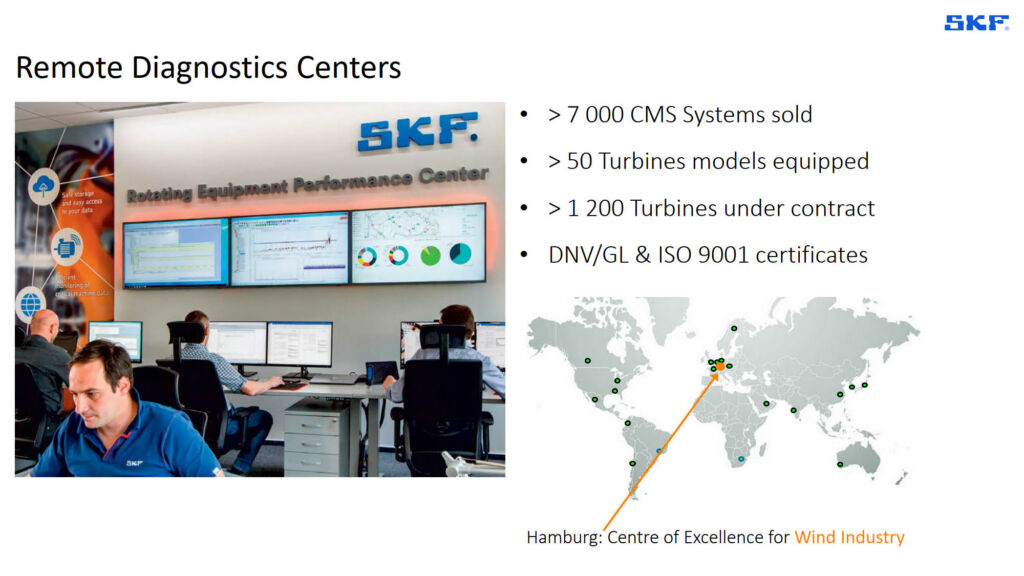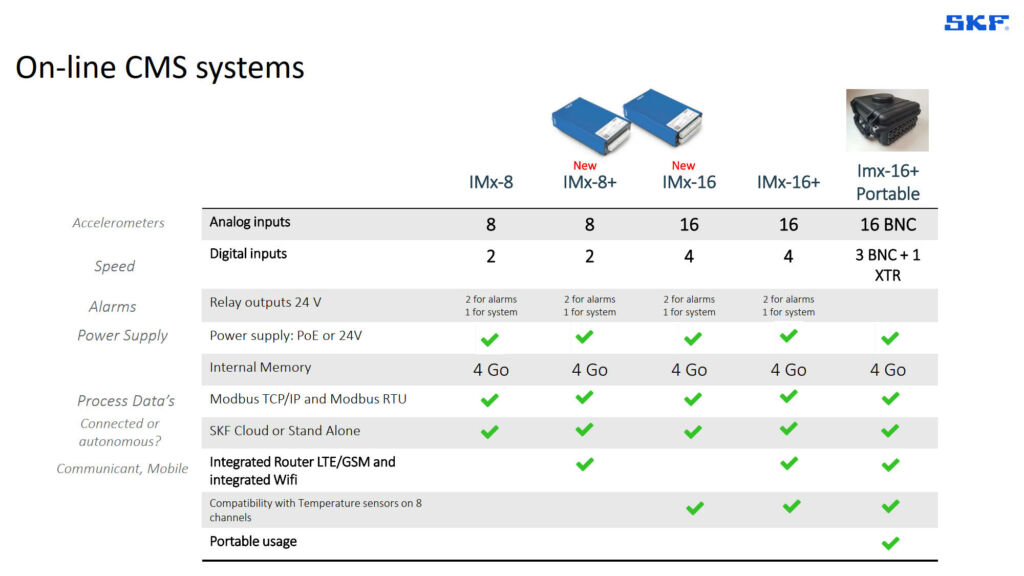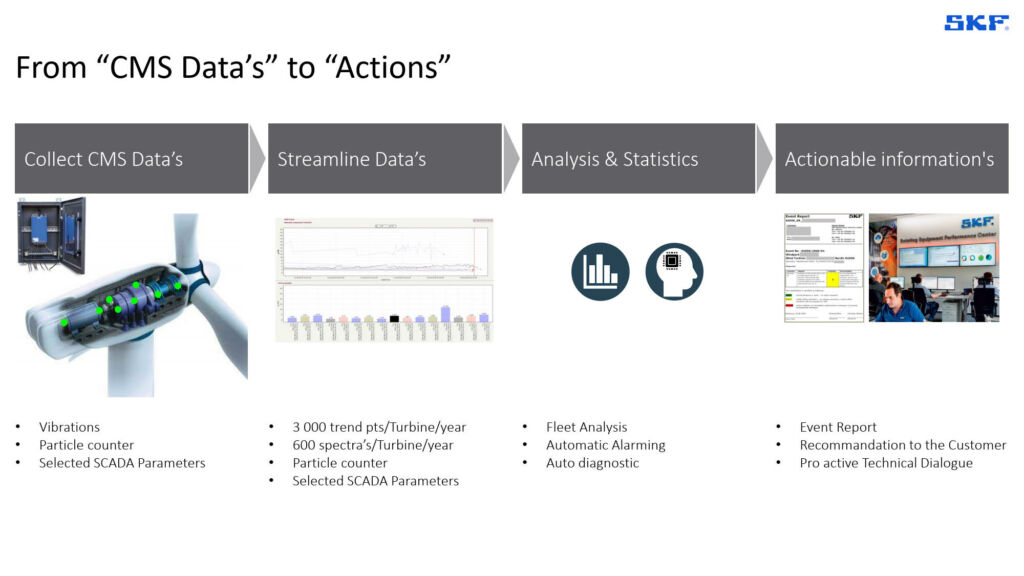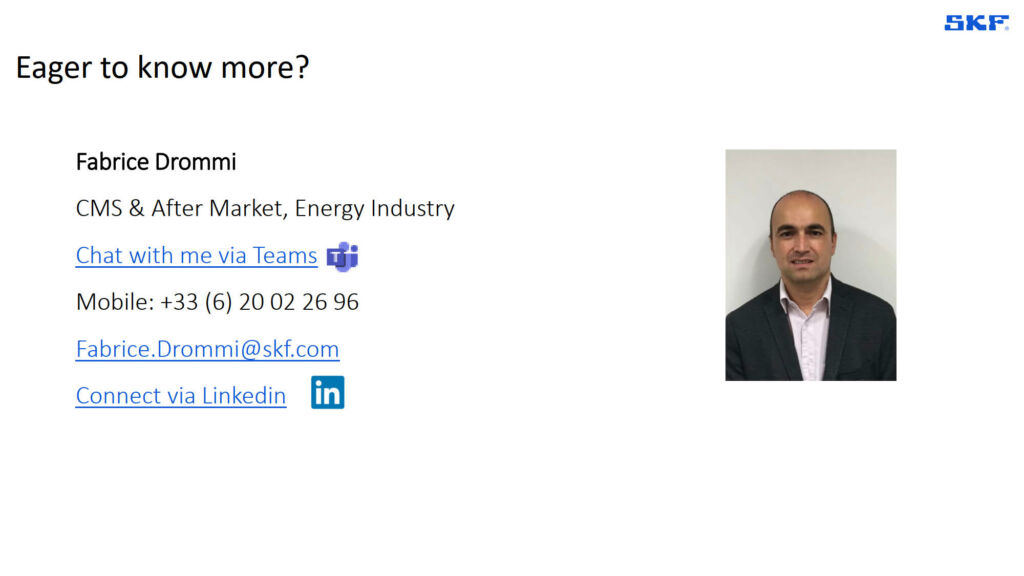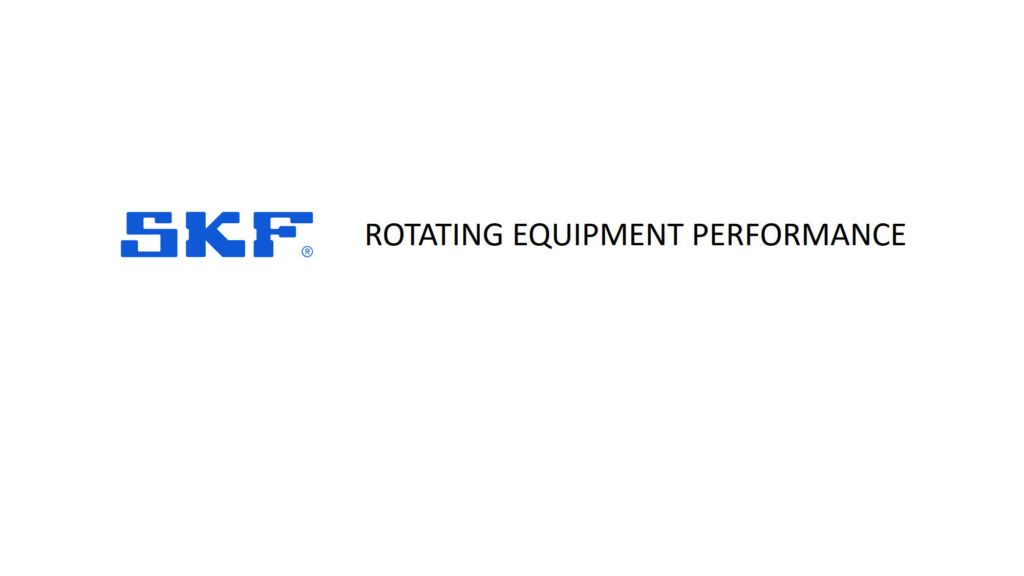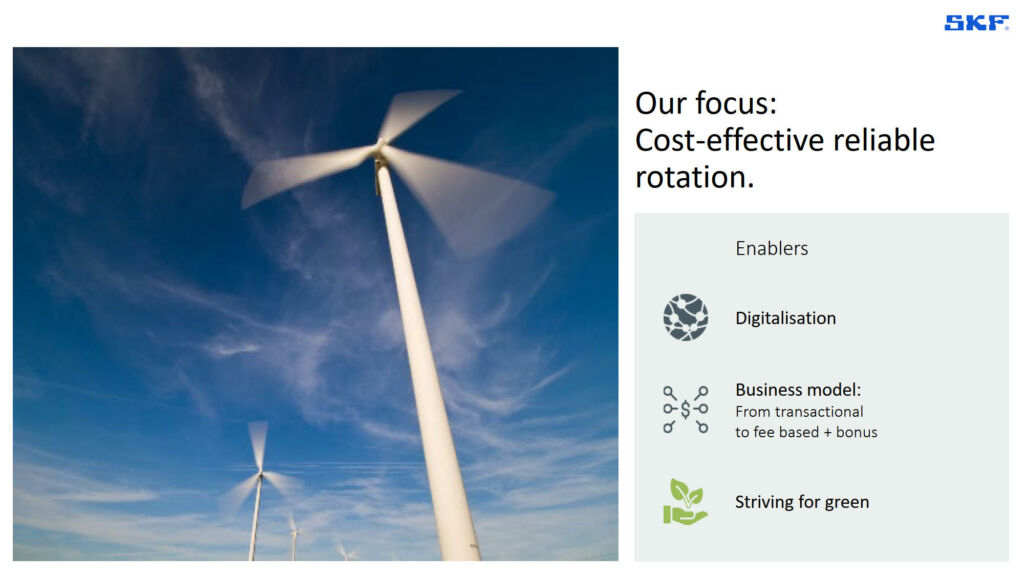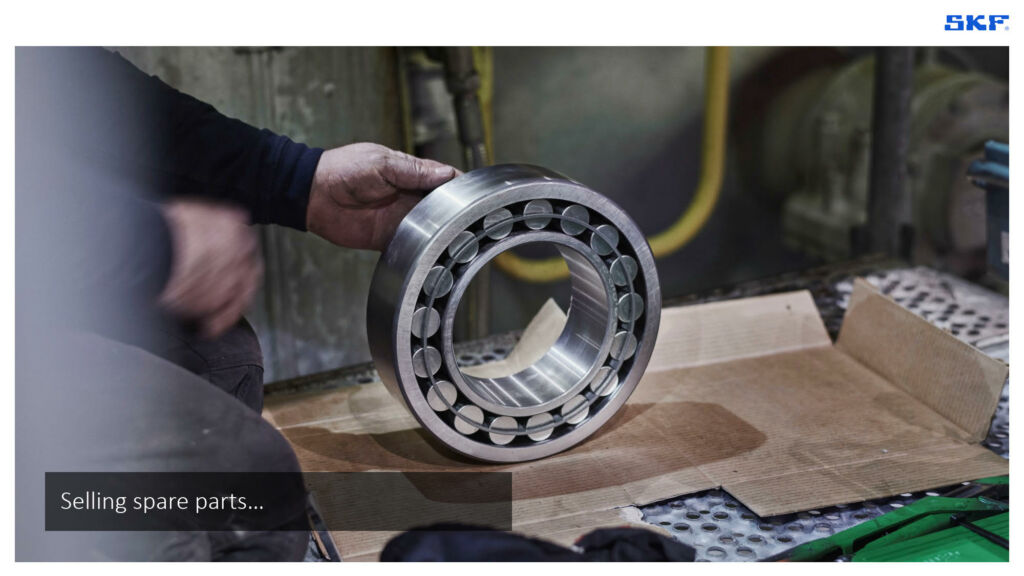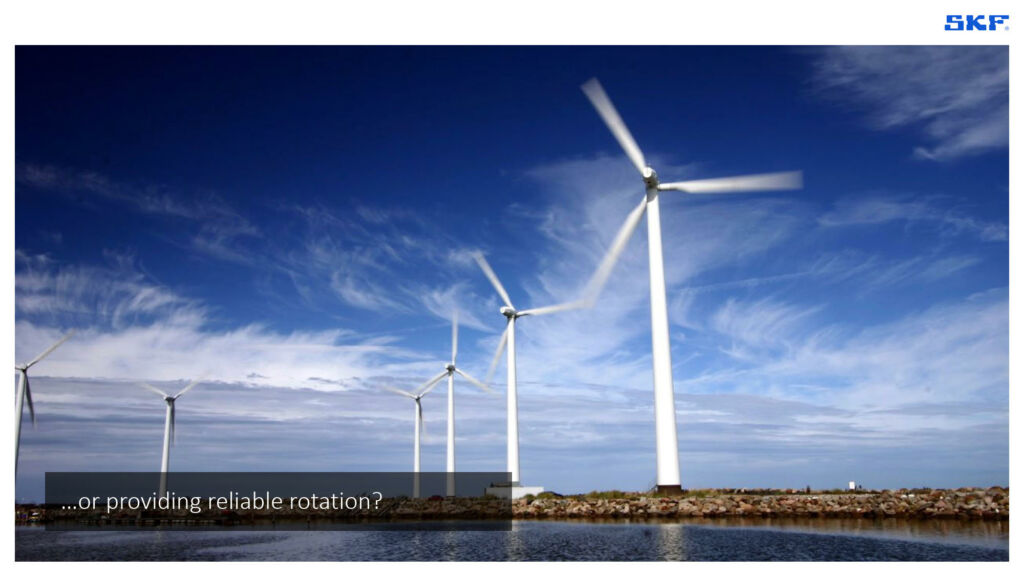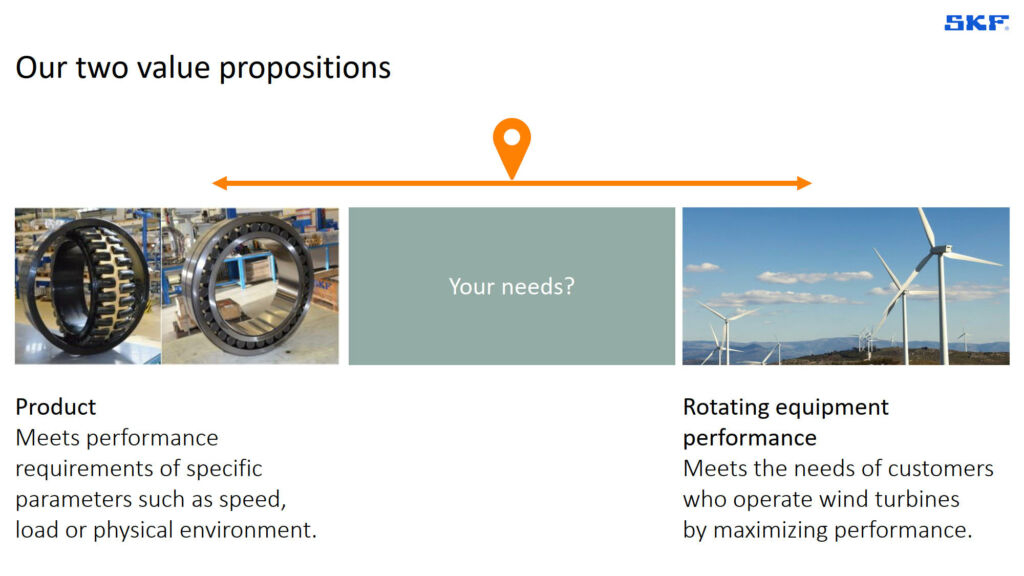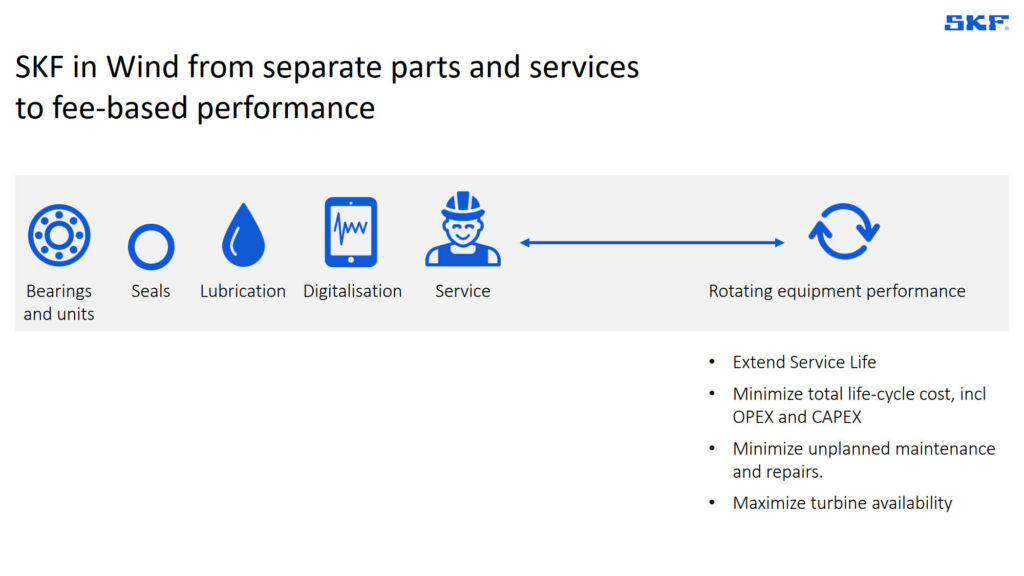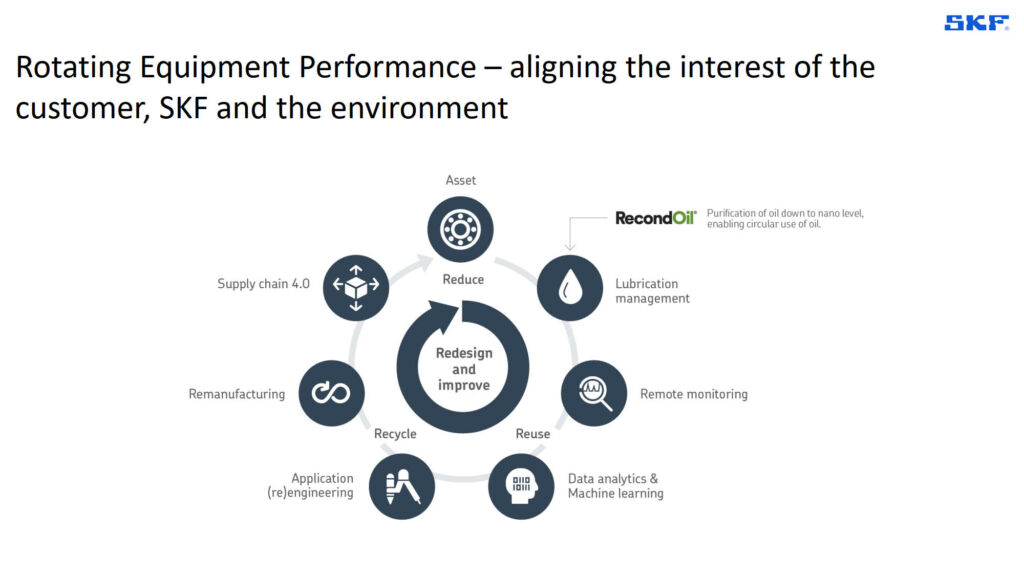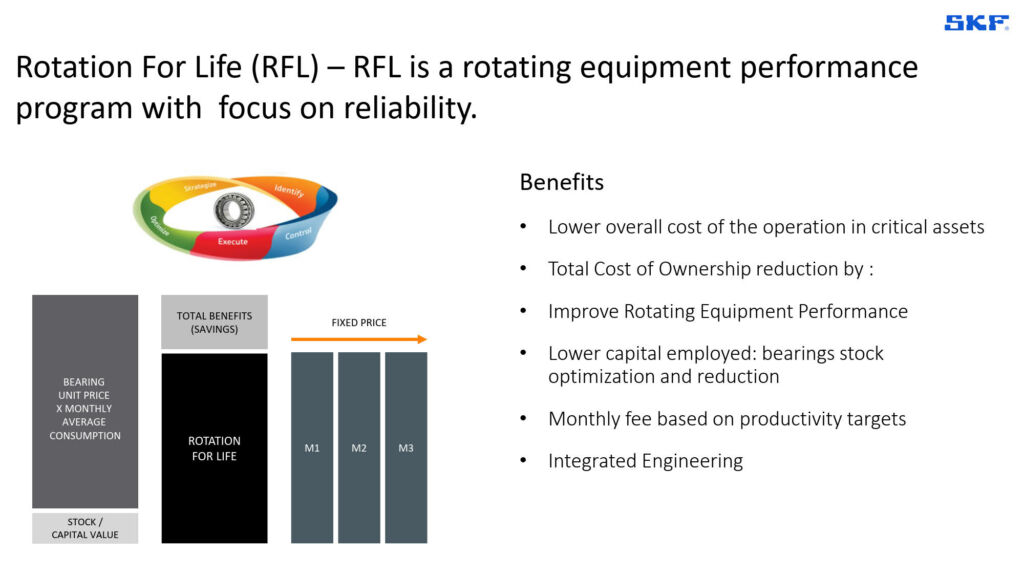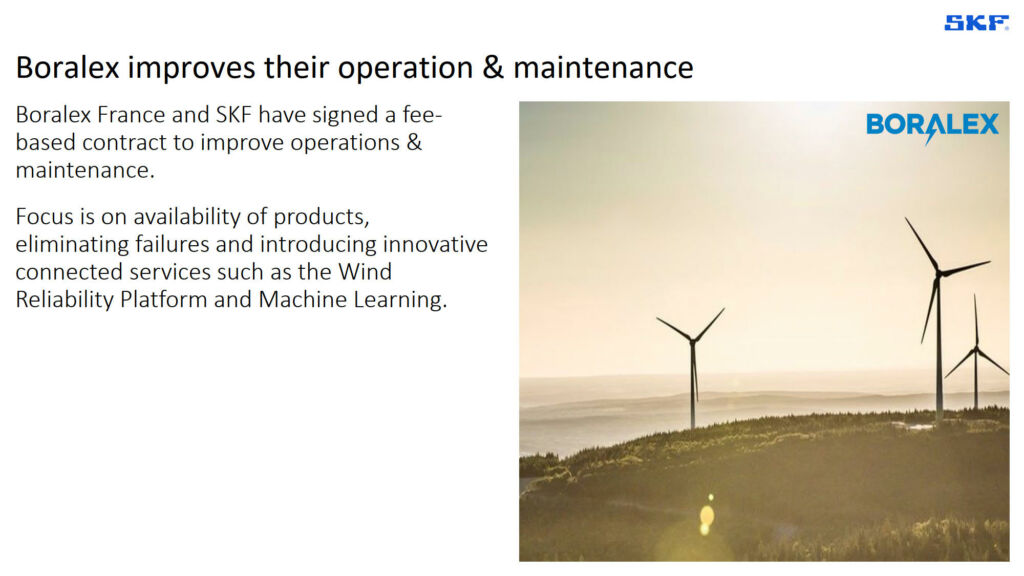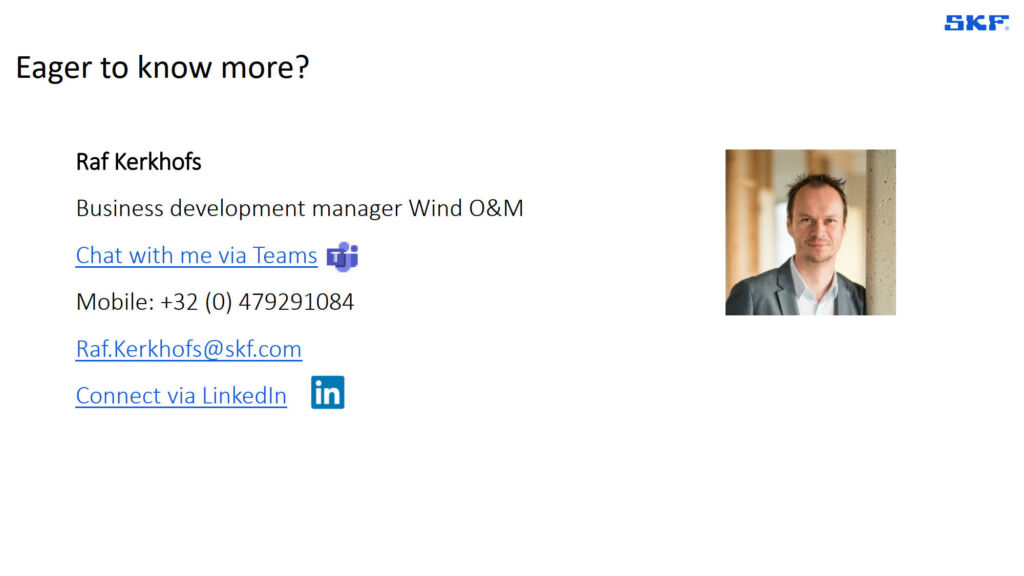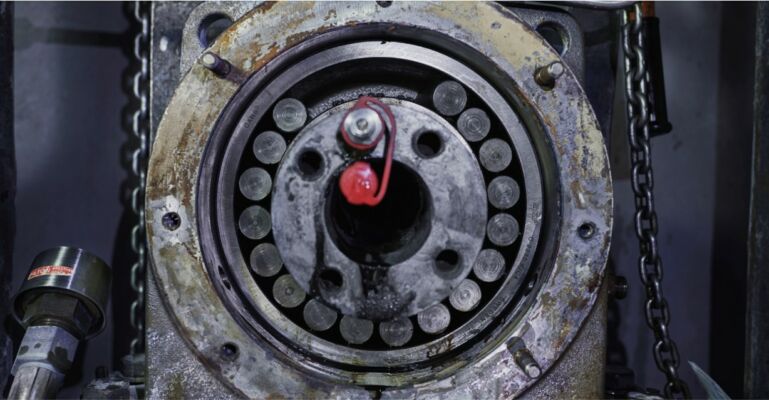In addition to preserving the environment, the central goals of the wind industry are minimizing risks, saving costs, and increasing efficiency. Achieving them is not always that simple. Most costs are incurred in the area of Operations & Maintenance (O&M) as a result of unforeseen malfunctions. One unexpected problem with a gearbox, for example, and the turbine cannot continue to run. Lengthy downtime will be incurred, as replacement parts need to be ordered and then transported at high expense to the isolated location of the wind turbine. Installation presents even more difficulties, with the bigger turbines standing at over 100 meters in the air. Overall, up to 30 percent of the cost per kWh generated over the life of a turbine can be attributed to O&M. Regular check-ups and service visits can reduce these costs, but they do not spot every single irregularity and fault. However, the use of digital systems and technologies can change that.
Working with foresight
If wind farm operators want to keep their O&M costs as low as possible, condition monitoring is a solution. Computer-aided methods are used to constantly monitor the performance of wind turbines through factors such as vibration, temperature, and speed. This is not a completely new idea. SCADA, for example, has long been established on the market. From a remote location, the software application controls all running processes in wind turbines, while continuously collecting real-time data. SKF takes this concept even further, combining the traditional aspects of condition monitoring with machine learning technologies (such as SKF Enlight AI), thus consolidating the monitoring process’s accuracy. Where SCADA detects problems that have already occurred, the condition monitoring system sends an alert before anything goes wrong. It relies on the same sensors as SCADA, but also makes use of automated machine learning. Corresponding algorithms process and analyze the collected data immediately, learn from it, and sound the alarm as soon as something deviates from the norm.
In that way, faults can be detected before they arise and rectified in good time. This predictive maintenance also aids the understanding of experts as to why and how certain shortcomings occurred, allowing the data and conclusions drawn from it to be integrated quickly into product development.
Figures indicate that the concept of condition monitoring and predictive maintenance is already present in the majority of the wind industry. SKF alone is currently monitoring the ball bearings for millions of customers, and the trend is only growing.
Rotating Equipment Performance
However, SKF is taking the use of digitally supported methods one step further with “Rotating Equipment Performance” (REP). The concept integrates condition monitoring and predictive maintenance into an iterative cycle, combining fault detection, analysis, and correction with new methods such as remanufacturing, reconditioning, and Supply Chain 4.0. SKF thus manages to unite the interests of both customers and the environment. But how exactly does REP work?
The starting point is SKF Enlight AI: The artificial intelligence observes and collects data, which is then analyzed and evaluated by experts in remote diagnostic centers. If customers have any questions, SKF experts are available at all times. For those wishing to improve their own know-how, SKF training courses can explain more about selecting the right ball bearings or the correct lubrication processes. Generally, SKF takes care of maintenance and services, alongside ensuring technologies and processes are state of the art. Further checks are always completed to see what more can be done for the environment, and where remanufacturing and reconditioning can be deployed.
The goal is to extend the lifecycle of critical components, reduce costs, improve performance, and minimize unplanned breakdowns and repairs – all with a focus on the customer and the environment.
Computer- and AI-based processes are now entrenched in the wind industry. As digitalization advances, the role of these processes is only going to grow. Concepts like automated machine learning, which have proven their worth many times over, are certain to grow in precision, speed, and accuracy with further use. We are excited to see what technology will enter the industry next – and how the current ones will evolve.
The first article in the WindEnergy Digital series is already online. If you want learn about how the wind industry can become more sustainable and environmentally friendly, read part one here.
